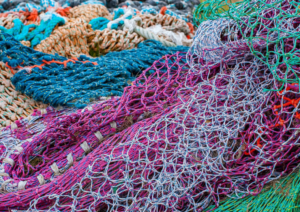Circular Economy – an approach towards re-using plastics
Circular Australia along with researchers from CSIRO discuss circular solutions, from recyclable paint to modular processing options for ghost nets. Download a PDF copy of the presentations given at the Symposium here:
Why reducing & recycling plastic wont be enough on its own [pdf] – Jason Graham-Nye (Circular Australia)
[no abstract available]
A vision for a Sustainable Future: Innovative transformations and solutions that deliver benefits for our people and planet [not available to download – Please contact speaker] – Anirban Ghose (UNSW Sydney)
A sustainable future requires development of conceptual, scientific and technological innovations and strong collaborations between research and industry partners. The UNSW Sustainable Materials Research and Technology (SMaRT) Centre aims to boost resource recovery capability by creating new advanced and scalable manufacturing technologies, based on SMaRT’s Microrecycling and MICROfactorieTM concepts, to recover and reform the materials from complex waste so they can be used again as manufacturing feedstock. The world can become more sustainable by adopting fit-for-purpose green manufacturing solutions by placing greater value on waste materials and developing circular pathways for their reuse and remanufacture. SMaRT is forging new discoveries in partnership with industry partners so that technologies developed are commercially fit for purpose. SMaRT@UNSW has a strong focus on, and track record of, translating its scientific discoveries into real world application in collaboration with industry and government partners. The Centre is focusing on recovering valuable materials from waste to help create materials sustainability and accelerate efforts to reduce emissions and decarbonise.
Towards recyclable thermoset plastics [pdf] – Richard Evans (CSIRO)
This presentation discusses the challenges of recycling thermoset polymers. Polymers, also known as plastics, can be broadly divided into two types: thermoplastics and thermosets. Thermoplastics, such as well-known examples like PET, polyethylene, and polypropylene, soften and melt when heated. This allows them to be easily processed and reprocessed, and their solvent solubility greatly aids their recycling through mechanical or chemical methods. As a result, thermoplastics represent the vast majority of polymers that can be potentially or are being recycled. On the other hand, thermoset polymers are materials that irreversibly harden. They do not melt when heated and are largely intractable and insoluble. Examples of such materials are high-performance engineering polymers like epoxy, phenolic and melamine resins, polyimides, and many polyurethanes. Recycling thermoset polymers represents a far greater challenge. We are exploring methods to build reversibility into thermosets to allow re-processability or de-polymerization and will report on our initial approach in this strategic research.
Modular processing options for ghost nets and other marine debris in remote northern Australia [pdf] – Melissa Skidmore (CSIRO)
Ghost nets are fishing nets that have been discarded or lost in the ocean by fishing vessels. Ghost nets and other marine debris damage marine and coastal environments, impact plant and animal species, and injure and kill marine fauna. Ghost nets and other marine debris can be highly degraded and contaminated. This presentation discusses an investigation into a modular recycling pathway for ghost nets and other marine debris in the Gulf of Carpentaria and Torres Strait, through the identification of a supply chain, recycling technology and market pathway. Giving an overview of opportunities and challenges that have been reality checked against the metrics of technical considerations, community desire, expectations and readiness and applicability to a remote location.
Self healing coatings for service life extension of the built environment [not available for download – please contact speaker] – Russel Varley (Deakin University)
Preventing corrosion within the built environment is one of the biggest challenges faced by the the wider construction and infrastructure industries because of its massive impact on the integrity of pipelines, off-shore platforms, and wind turbines to name a few. Harsh environments and long-term exposure are two major contributors to corrosion of metallic components and deterioration of related non-metallic components that can prematurely reduce the life of these assets. To avoid catastrophic failure, deterioration in performance requires continuous monitoring and when necessary, an effective, although complex time consuming repair processes. Self-healing coatings represent an alternative approach to sustainability where resource efficiency is a necessity, enabling service life extension, simple repair and reduced maintenance regimes for structures. A novel polyurethane coating containing boronic ester linkages that automatically removes scratches and cracks while only requiring moisture from the air at room temperature will be presented and will be shown to be effective, repeatable and durable.
When we collaborate we can go further: Insights from the Australia India Research and Industry Collaboration to Reduce Plastics Waste [pdf] – Heinz Schandl (CSIRO)
We are summarising the main learnings of a three-year collaborative research initiative aimed to reduce plastics waste in India and resulting in a roadmap developed with industry, government and community participants. The project was led by CSIRO and included six premier research partners from India and Australia and engaged over 40 researchers from both countries. Based on a good understanding of plastics material flows the team investigated novel policies, business models and technologies that can address the massive challenge of plastics waste in India and identified economically attractive opportunities for circularity. The participative process that resulted in the roadmap identified seven elements of India’s circular economy of plastics and laid out strategies to get there. In addition to the scientific learnings and the search for the path ahead for circularity with Indian stakeholders there a multiple insights into the value of international collaboration addressing global environmental issues.

